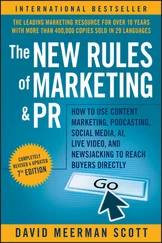Timothy Ferriss - The 4-Hour Workweek - Escape 9–5, Live Anywhere, and Join the New Rich - Expanded and Updated
Здесь есть возможность читать онлайн «Timothy Ferriss - The 4-Hour Workweek - Escape 9–5, Live Anywhere, and Join the New Rich - Expanded and Updated» весь текст электронной книги совершенно бесплатно (целиком полную версию без сокращений). В некоторых случаях можно слушать аудио, скачать через торрент в формате fb2 и присутствует краткое содержание. Жанр: Прочая научная литература, на английском языке. Описание произведения, (предисловие) а так же отзывы посетителей доступны на портале библиотеки ЛибКат.
- Название:The 4-Hour Workweek: Escape 9–5, Live Anywhere, and Join the New Rich - Expanded and Updated
- Автор:
- Жанр:
- Год:неизвестен
- ISBN:нет данных
- Рейтинг книги:3 / 5. Голосов: 1
-
Избранное:Добавить в избранное
- Отзывы:
-
Ваша оценка:
- 60
- 1
- 2
- 3
- 4
- 5
The 4-Hour Workweek: Escape 9–5, Live Anywhere, and Join the New Rich - Expanded and Updated: краткое содержание, описание и аннотация
Предлагаем к чтению аннотацию, описание, краткое содержание или предисловие (зависит от того, что написал сам автор книги «The 4-Hour Workweek: Escape 9–5, Live Anywhere, and Join the New Rich - Expanded and Updated»). Если вы не нашли необходимую информацию о книге — напишите в комментариях, мы постараемся отыскать её.
The 4-Hour Workweek: Escape 9–5, Live Anywhere, and Join the New Rich - Expanded and Updated — читать онлайн бесплатно полную книгу (весь текст) целиком
Ниже представлен текст книги, разбитый по страницам. Система сохранения места последней прочитанной страницы, позволяет с удобством читать онлайн бесплатно книгу «The 4-Hour Workweek: Escape 9–5, Live Anywhere, and Join the New Rich - Expanded and Updated», без необходимости каждый раз заново искать на чём Вы остановились. Поставьте закладку, и сможете в любой момент перейти на страницу, на которой закончили чтение.
Интервал:
Закладка:
Get into the habit of considering what “if … then” actions can be proposed in any e-mail where you ask a question.
3. Meetings should only be held to make decisions about a predefined situation, not to define the problem. If someone proposes that you meet with them or “set a time to talk on the phone,” ask that person to send you an e-mail with an agenda to define the purpose:
That sounds doable. So I can best prepare, can you please send me an e-mail with an agenda? That is, the topics and questions we’ll need to address? That would be great. Thanks in advance.
Don’t give them a chance to bail out. The “thanks in advance” before a retort increases your chances of getting the e-mail.
The e-mail medium forces people to define the desired outcome of a meeting or call. Nine times out of ten, a meeting is unnecessary and you can answer the questions, once defined, via e-mail. Impose this habit on others. I haven’t had an in-person meeting for my business in more than five years and have had fewer than a dozen conference calls, all lasting less than 30 minutes.
4. Speaking of 30 minutes, if you absolutely cannot stop a meeting or call from happening, define the end time . Do not leave these discussions open-ended, and keep them short. If things are well-defined, decisions should not take more than 30 minutes. Cite other commitments at odd times to make them more believable (e.g., 3:20 vs. 3:30) and force people to focus instead of socializing, commiserating, and digressing. If you must join a meeting that is scheduled to last a long time or that is open-ended, inform the organizer that you would like permission to cover your portion first, as you have a commitment in 15 minutes. If you have to, feign an urgent phone call. Get the hell out of there and have someone else update you later. The other option is to be completely transparent and voice your opinion of how unnecessary the meeting is. If you choose this route, be prepared to face fire and offer alternatives.
5. The cubicle is your temple—don’t permit casual visitors. Some suggest using a clear “do not disturb” sign of some type, but I have found that this is ignored unless you have an office. My approach was to put headphones on, even if I wasn’t listening to anything. If someone approached me despite this discouragement, I would pretend to be on the phone. I’d put a finger to my lips, say something like, “I hear you,” and then say into the mic, “Can you hold on a second?” Next, I’d turn to the invader and say, “Hi. What can I do for you?” I wouldn’t let them “get back to me” but rather force the person to give me a five-second summary and then send me an e-mail if necessary.
If headphone games aren’t your thing, the reflexive response to an invader should be the same as when answering the cell phone: “Hi, invader. I’m right in the middle of something. How can I be of help?” If it’s not clear within 30 seconds, ask the person to send you an e-mail about the chosen issue; do not offer to send them an e-mail first: “I’ll be happy to help, but I have to finish this first. Can you send me a quick e-mail to remind me?” If you still cannot deflect an invader, give the person a time limit on your availability, which can also be used for phone conversations: “OK, I only have two minutes before a call, but what’s the situation and what can I do to help?”
6. Use the Puppy Dog Close to help your superiors and others develop the no-meeting habit. The Puppy Dog Close in sales is so named because it is based on the pet store sales approach: If someone likes a puppy but is hesitant to make the life-altering purchase, just offer to let them take the pup home and bring it back if they change their minds. Of course, the return seldom happens.
The Puppy Dog Close is invaluable whenever you face resistance to permanent changes. Get your foot in the door with a “let’s just try it once” reversible trial.
Compare the following:
“I think you’d love this puppy. It will forever add to your responsibilities until he dies 10 years from now. No more care-free vacations, and you’ll finally get to pick up poop all over the city—what do you think?”
vs.
Now imagine walking up to your boss in the hallway and clapping a hand on her shoulder:
“I’d like to go to the meeting, but I have a better idea. Let’s never have another one, since all we do is waste time and not decide anything useful.”
vs.
The second set of alternatives seem less permanent, and they’re intended to appear so. Repeat this routine and ensure that you achieve more outside of the meeting than the attendees do within it; repeat the disappearing act as often as possible and cite improved productivity to convert this slowly into a permanent routine change.
Learn to imitate any good child: “Just this once! Please!!! I promise I’ll do X!” Parents fall for it because kids help adults to fool themselves. It works with bosses, suppliers, customers, and the rest of the world, too.
Use it, but don’t fall for it. If a boss asks for overtime “just this once,” he or she will expect it in the future.
Time Consumers: Batch and Do Not Falter
A schedule defends from chaos and whim.
—ANNIE DILLARD, winner of Pulitzer Prize in nonfiction, 1975
If you have never used a commercial printer before, the pricing and lead times could surprise you.
Let’s assume it costs $310 and takes one week to print 20 customized T-shirts with 4-color logos. How much and how long does it take to print 3 of the same T-shirt?
$310 and one week.
How is that possible? Simple—the setup charges don’t change. It costs the printer the same amount in materials for plate preparation ($150) and the same in labor to man the press itself ($100). The setup is the real time-consumer, and thus the job, despite its small size, needs to be scheduled just like the other, resulting in the same one-week delivery date. The lower economy of scale picks up the rest: The cost for 3 shirts is $20 per shirt x3 shirts instead of $3 per shirt x20 shirts.
The cost- and time-effective solution, therefore, is to wait until you have a larger order, an approach called “batching.” Batching is also the solution to our distracting but necessary time consumers, those repetitive tasks that interrupt the most important.
If you check mail and make bill payments five times a week, it might take 30 minutes per instance and you respond to a total of 20 letters in two and a half hours. If you do this once per week instead, it might take 60 minutes total and you still respond to a total of 20 letters. People do the former out of fear of emergencies. First, there are seldom real emergencies. Second, of the urgent communication you will receive, missing a deadline is usually reversible and otherwise costs a minimum to correct.
There is an inescapable setup time for all tasks, large or minuscule in scale. It is often the same for one as it is for a hundred. There is a psychological switching of gears that can require up to 45 minutes to resume a major task that has been interrupted. More than a quarter of each 9–5 period (28%) is consumed by such interruptions. 13
This is true of all recurring tasks and is precisely why we have already decided to check e-mail and phone calls twice per day at specific predetermined times (between which we let them accumulate).
From mid-2004 to 2007, I checked mail no more than once a week, often not for up to four weeks at a time. Nothing was irreparable, and nothing cost more than $300 to fix. This batching has saved me hundreds of hours of redundant work. How much is your time worth?
Let’s use a hypothetical example:
Читать дальшеИнтервал:
Закладка:
Похожие книги на «The 4-Hour Workweek: Escape 9–5, Live Anywhere, and Join the New Rich - Expanded and Updated»
Представляем Вашему вниманию похожие книги на «The 4-Hour Workweek: Escape 9–5, Live Anywhere, and Join the New Rich - Expanded and Updated» списком для выбора. Мы отобрали схожую по названию и смыслу литературу в надежде предоставить читателям больше вариантов отыскать новые, интересные, ещё непрочитанные произведения.
Обсуждение, отзывы о книге «The 4-Hour Workweek: Escape 9–5, Live Anywhere, and Join the New Rich - Expanded and Updated» и просто собственные мнения читателей. Оставьте ваши комментарии, напишите, что Вы думаете о произведении, его смысле или главных героях. Укажите что конкретно понравилось, а что нет, и почему Вы так считаете.












